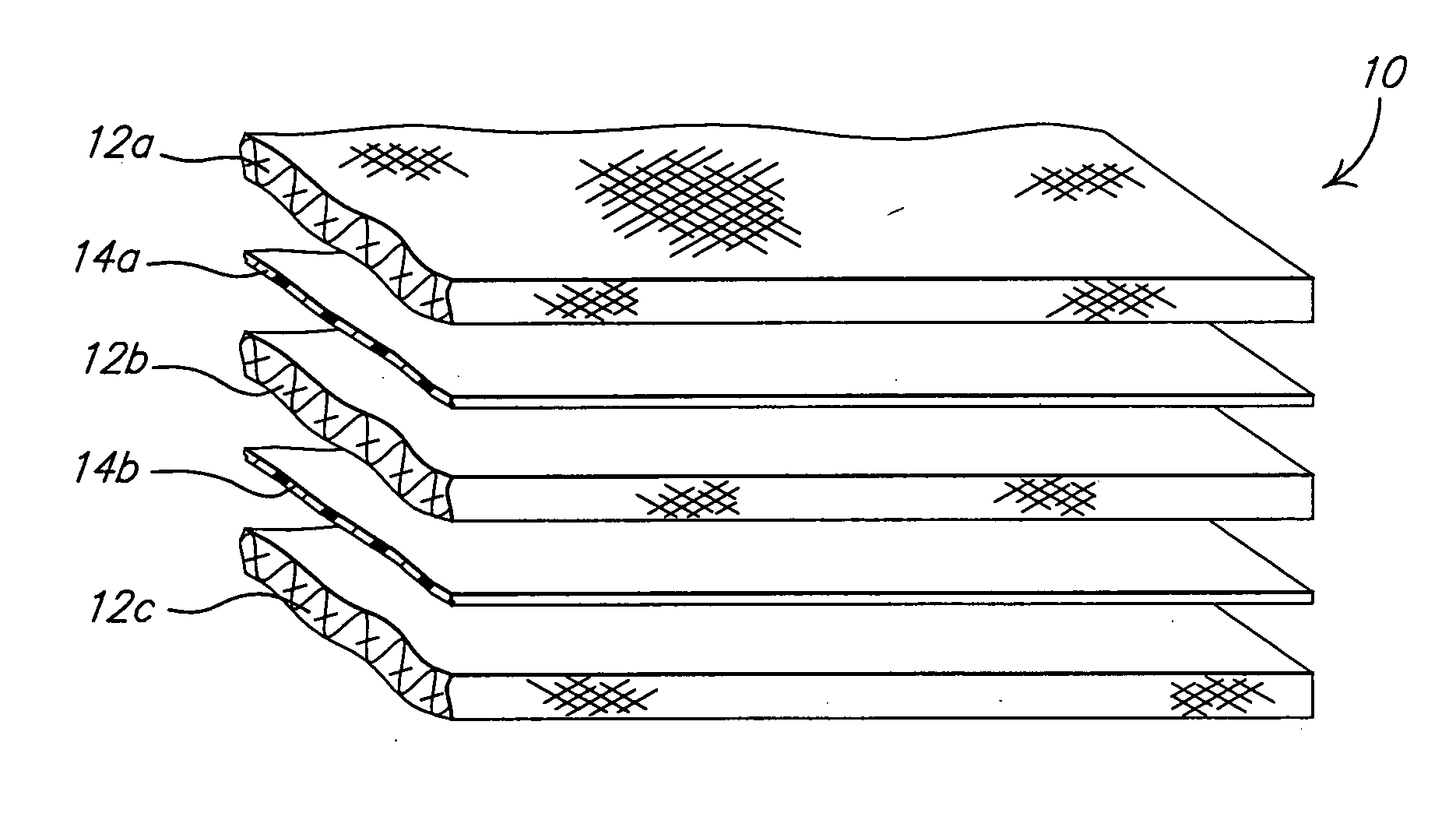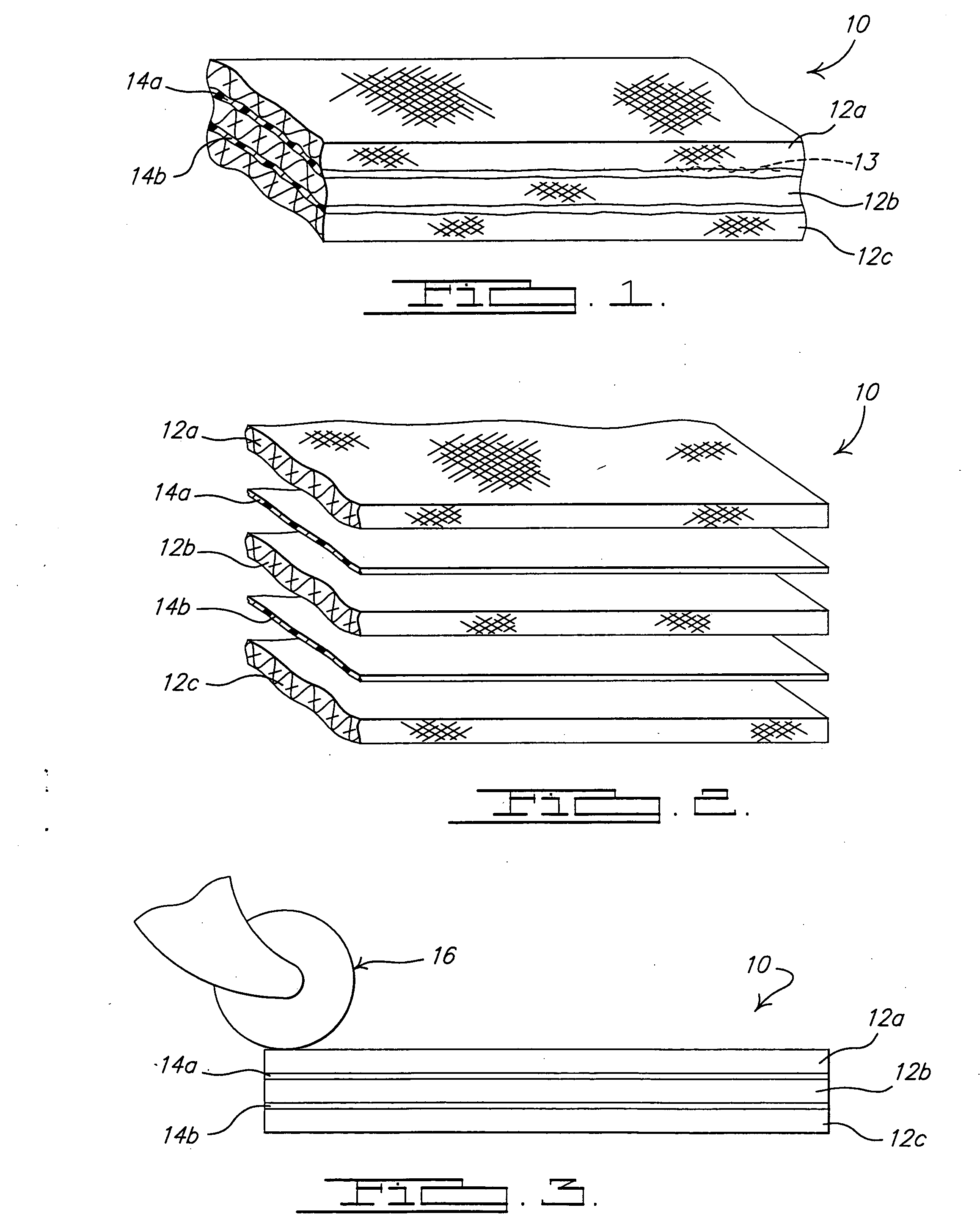Method and apparatus for melt-bonded materials for tackification of dry fabric preforms
a technology of melt-bonded materials and preforms, which is applied in the direction of chemistry apparatus and processes, manufacturing tools, presses, etc., can solve the problems of affecting the design of certain parts, affecting the tackification effect of preforms, and requiring large forces to push, so as to achieve a lesser degree of impact damage tolerance and significant additional impact damage resistance
- Summary
- Abstract
- Description
- Claims
- Application Information
AI Technical Summary
Benefits of technology
Problems solved by technology
Method used
Image
Examples
Embodiment Construction
[0012] The following description of the preferred embodiment(s) is merely exemplary in nature and is in no way intended to limit the invention, its application, or uses.
[0013] Referring to FIGS. 1 and 2, there is shown a fibrous preform 10 in accordance with a preferred embodiment of the present invention. The fibrous preform 10 is comprised of a plurality of layers of fibers 12a, 12b and 12c that may be unidirectional or multiaxial, woven or nonwoven, that are held together by a plurality of non-woven, thermoplastic layers or “veils”14a, 14b that are integral to each fiber layer. Thus each fibrous layer 12a, 12b, and 12c comprises a combination of structural fibers. At least a sub-plurality of the fibrous layers 12 preferably include the thermoplastic veils 14a, 14b, etc. However, it will be appreciated that each fibrous layer 12 may include at least one thermoplastic veil 14. Furthermore, each fibrous layer may itself be comprised of multiple fiber and thermoplastic layers as lon...
PUM
| Property | Measurement | Unit |
|---|---|---|
| melting point | aaaaa | aaaaa |
| weight | aaaaa | aaaaa |
| areal weight | aaaaa | aaaaa |
Abstract
Description
Claims
Application Information
 Login to View More
Login to View More - R&D
- Intellectual Property
- Life Sciences
- Materials
- Tech Scout
- Unparalleled Data Quality
- Higher Quality Content
- 60% Fewer Hallucinations
Browse by: Latest US Patents, China's latest patents, Technical Efficacy Thesaurus, Application Domain, Technology Topic, Popular Technical Reports.
© 2025 PatSnap. All rights reserved.Legal|Privacy policy|Modern Slavery Act Transparency Statement|Sitemap|About US| Contact US: help@patsnap.com



